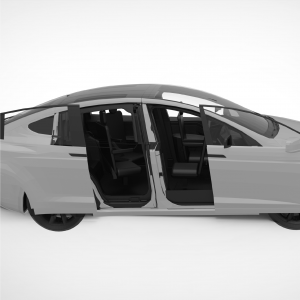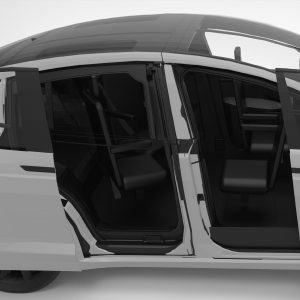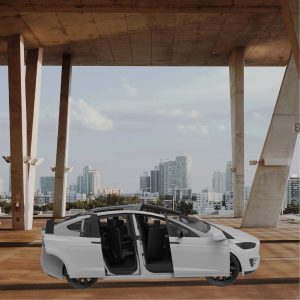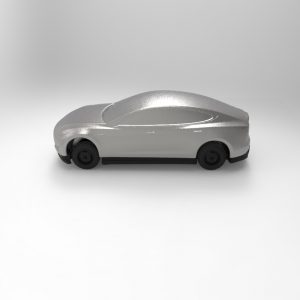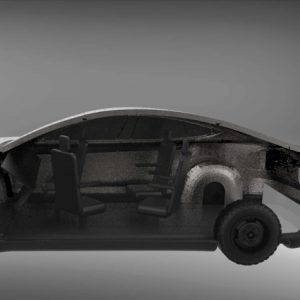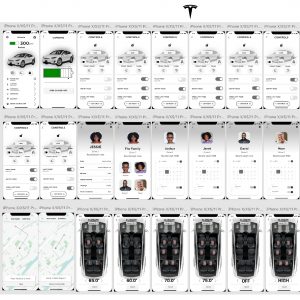Product Name: Tesla Model X [Eco]Smart
Problem Statement: A typical passenger vehicle emits about 4.6 metric tons of carbon dioxide per year, causing significant damage to their ecological footprint (United States Environmental Protection Agency, 2018). Sustainability isn’t the main focus of the average consumer. The most important thing on their mind is price, miles per gallon, and style, not comfortability or sustainability. The average amount of cars per household is two to three, and sixty-six percent of Americans own two or more cars (Dobrinova, 2019).
Since the average gasoline car reaches around 22 miles per gallon and the average passenger drives around 11,500 miles per year it equates to 404 grams of CO2 per mile (United States Environmental Protection Agency, 2018). This, in turn, creates a buildup of CO2 gases in the atmosphere.
Cars are necessary tools to American society as a whole, but some age groups and social economic classes are unable to access this privilege. The aging population in the United States is growing rapidly, as baby boomers are reshaping America’s population (Kilduff, L., Mather, M., Scommegna, P. 2019). It is projected that the number of Americans ages 65 and older is supposed to double from 52 million in 2018 to 95 million by 2060 (Kilduff, L., Mather, M., Scommegna, P. 2019). This is an astonishing amount of growth, as people get older, it becomes much harder for them to drive a vehicle on their own. At the other end of the spectrum, children are unable to drive despite the many places they need to go. This causes a burden on family members with cars to transport them to various locations, regardless of their own personal desires. Ideal family travel apps are Lyft and Uber which are not available to children, and most elderly people don’t know how to use it or don’t trust it.
Primary research showed that if users put price aside, their main focus was on comfortability and sustainability. Despite price being the deciding factor, most interviewees disliked their current car interior and exterior.
With these factors in mind, how might we redesign the family travel experience to make it more comfortable, sustainable, and accessible?
Solution: The solution presented transforms the daily commute and family travel experience by redesigning the Tesla Model X into a fully autonomous, sustainable, comfortable and accessible vehicle.
The Tesla Model X [Eco]Smart is a private and public subscription service that allows riders to be sustainable, ride in luxury, and save money on short-term and long term travel. It is equipped with SmartSummon (GPS ridesharing app), SmartSeating (recling, and freeform seating) and a touchscreen/AI driven dashboard. The [Eco]Smart’s interior is wheelchair accessible, along with other customizable settings for people with disabilities. The redesign fits the level of comfortability, research showed users wanted within their car. In 2017 Americans spent 70 billion hours driving, with an average of 52 minutes daily (Johnson, 2018).
This vehicle will allow users to optimize drive time by doing various activities like, watching a show, doing work, or listening to music. Implementing various technologies like AI and voice recognition, will allow every member of the family access to all the vehicle’s functions. This is an ideal setting to maximize the use of a vehicle within a household. Overall this vehicle will reduce the number of cars on the road and optimize the car usage. The Tesla Model X [Eco]Smart is a look into the future of autonomous vehicles. Semi-autonomous vehicles are currently on the market now, which means full autonomy is possible with technology rapidly growing.
Together, these design solutions will solve the main issues associated with the daily commute and family travel experience.
References:
Greenhouse Gas Emissions from a Typical Passenger Vehicle. (2018, May 10). Retrieved from https://www.epa.gov/greenvehicles/greenhouse-gas-emissions-typical-passenger-vehicle.
Kilduff, L., Mather, M., Scommegna, P. (2019, July 15). Population Reference Bureau’s Population Bulletin – Fact Sheet: Aging in the United States. Retrieved from https://www.prb.org/aging-unitedstates-fact-sheet/.
Johnson, T. (2018, February 27). Think You’re In Your Car More? You’re Right. Americans Spend 70 Billion Hours Behind the Wheel. Retrieved from https://www.statista.com/topics/1484/families/.

![Tesla Model X [Eco]Smart](https://vpa.syr.edu/wp-content/uploads/Image-1-5-300x300.jpg)
